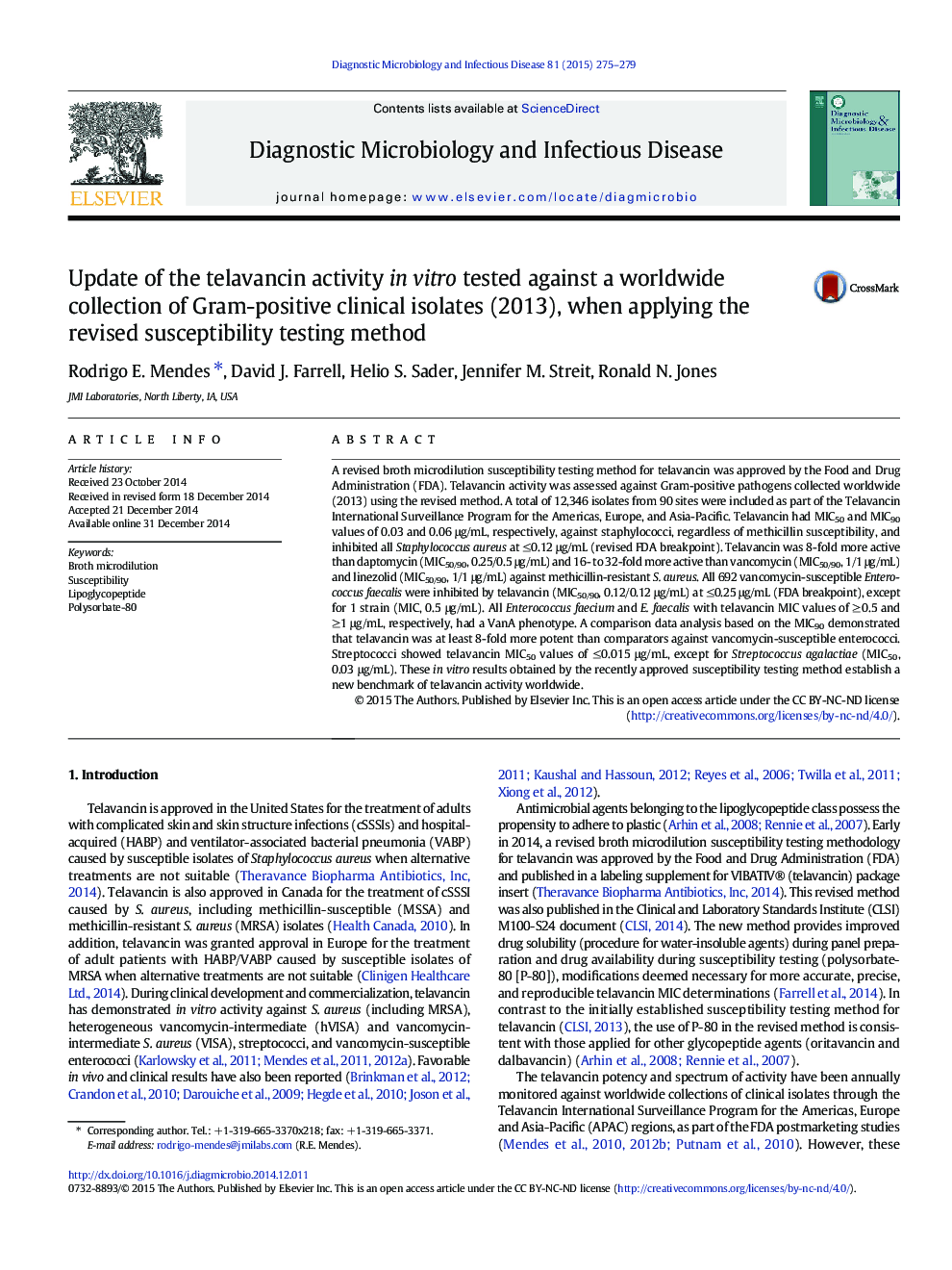| Article ID | Journal | Published Year | Pages | File Type |
|---|---|---|---|---|
| 6115720 | Diagnostic Microbiology and Infectious Disease | 2015 | 5 Pages |
Abstract
A revised broth microdilution susceptibility testing method for telavancin was approved by the Food and Drug Administration (FDA). Telavancin activity was assessed against Gram-positive pathogens collected worldwide (2013) using the revised method. A total of 12,346 isolates from 90 sites were included as part of the Telavancin International Surveillance Program for the Americas, Europe, and Asia-Pacific. Telavancin had MIC50 and MIC90 values of 0.03 and 0.06 μg/mL, respectively, against staphylococci, regardless of methicillin susceptibility, and inhibited all Staphylococcus aureus at â¤0.12 μg/mL (revised FDA breakpoint). Telavancin was 8-fold more active than daptomycin (MIC50/90, 0.25/0.5 μg/mL) and 16- to 32-fold more active than vancomycin (MIC50/90, 1/1 μg/mL) and linezolid (MIC50/90, 1/1 μg/mL) against methicillin-resistant S. aureus. All 692 vancomycin-susceptible Enterococcus faecalis were inhibited by telavancin (MIC50/90, 0.12/0.12 μg/mL) at â¤0.25 μg/mL (FDA breakpoint), except for 1 strain (MIC, 0.5 μg/mL). All Enterococcus faecium and E. faecalis with telavancin MIC values of â¥0.5 and â¥1 μg/mL, respectively, had a VanA phenotype. A comparison data analysis based on the MIC90 demonstrated that telavancin was at least 8-fold more potent than comparators against vancomycin-susceptible enterococci. Streptococci showed telavancin MIC50 values of â¤0.015 μg/mL, except for Streptococcus agalactiae (MIC50, 0.03 μg/mL). These in vitro results obtained by the recently approved susceptibility testing method establish a new benchmark of telavancin activity worldwide.
Related Topics
Life Sciences
Immunology and Microbiology
Applied Microbiology and Biotechnology
Authors
Rodrigo E. Mendes, David J. Farrell, Helio S. Sader, Jennifer M. Streit, Ronald N. Jones,
